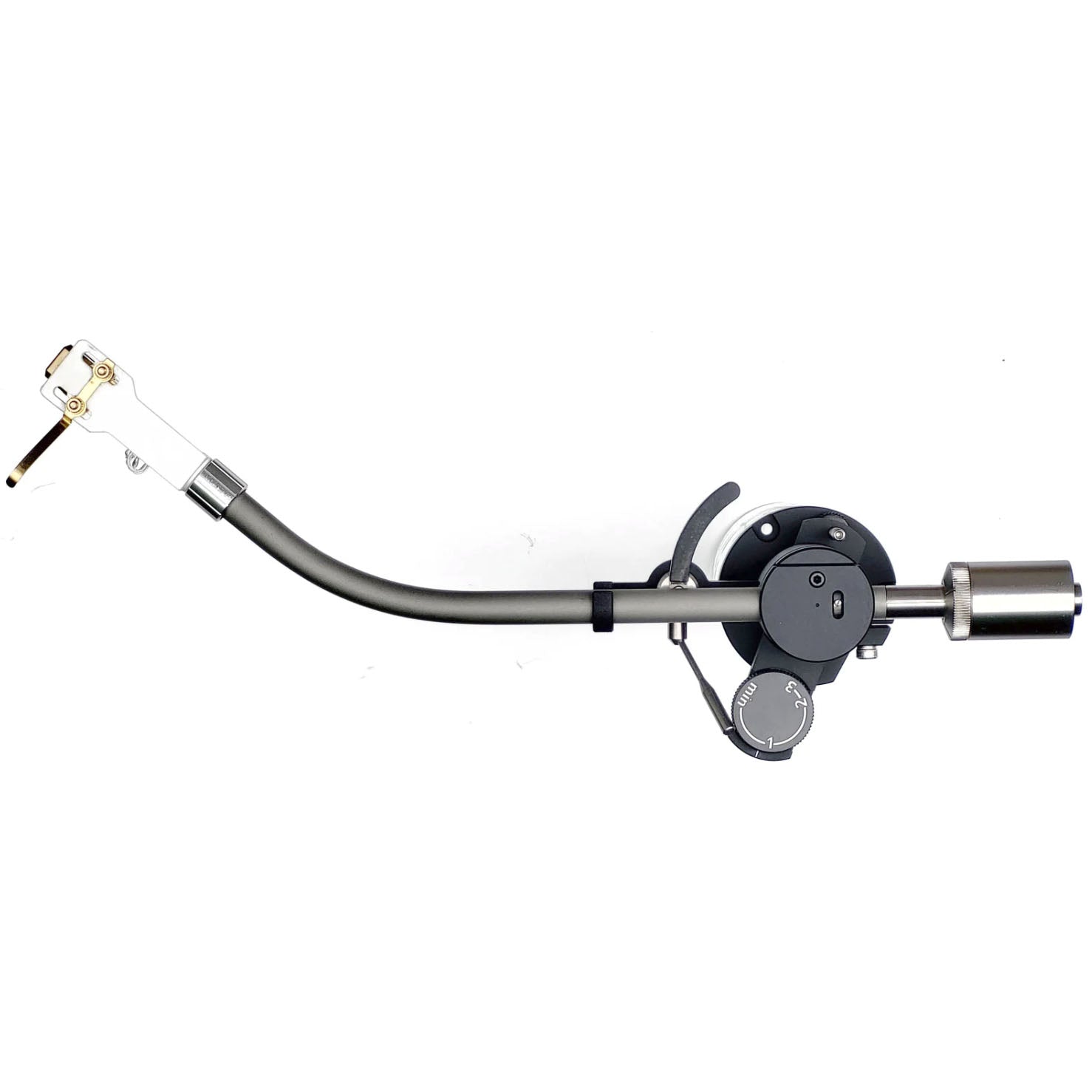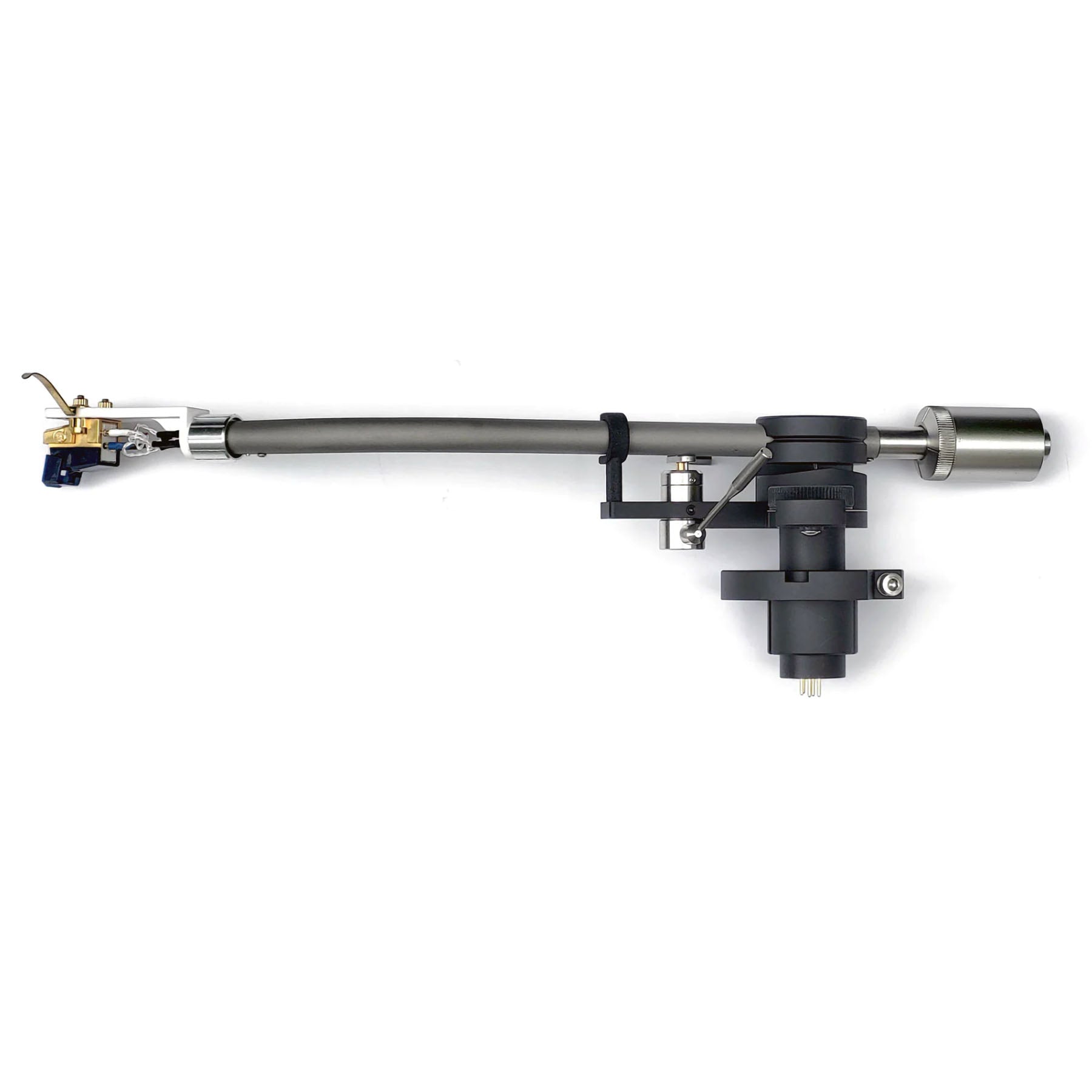What Makes Our Tonearms Better?
Strength
High rigidity is the single best prediction of great audio performance in tonearms and headshells
Our measurements consistently support that.
Low resonances
(but no elastic damping)
Tonearm's resonances can reach up to 0.5G! They are clearly audible. Removing resonances removes distortion, coloration, ringing and sibilance.
Elastic damping doesn't magically "erase" resonances. It stores, transforms and releases the energy back, killing the sonics.
Quality of Motion
The bearings ring. The bearings chatter. The bearings stick and then slap. This is heard as grain, and impairs the tracking performance.
We designed our tonearm around radically different bearings. How different? A video is surely worth a 1000 words.
Radically Different Design:
Flexure Pivot Horizontal Bearing
Monolithic flexure pivots are almost a hundred times more expensive than the usual rolling bearings. For that, you get amazing advantages:
- Zero starting torque/no stiction
- No bearing chatter
- Great tracking of warps
- Less inner groove distortion
- Lasts forever — no servicing, no lubrication
- Not influenced by temperature/humidity/dust/age
- Easy to replace if broken
What does a flexure bearing sound like? Smooth! Once you experience a tonearm that is free of bearing chatter, you will recognize the chatter's sonic signature in other designs.
Steel Arm Tube
Based on a large study of arm tube materials, we chose a steel tube with 0.5mm wall thickness.
- High bending resistance: 3 times higher than aluminium, 2 times higher than titanium of the same mass
- Low energy storage
Why is steel seldom used in today's tonearms? It's not possible to simply replace an aluminium or titanium arm tube with a steel one. A whole new design is called for.
Widely Spaced Vertical Hybrid Ceramic Bearings
We did a study of vertical bearings's influence on sound, and chose hybrid ceramic rolling bearings for the task:
- Better strength and precision
- Less chatter compared to closely spaced bearings
- Low starting torque/stiction
- Better resolution
- Sharper dynamics
- Better sibilance control
- Less inner groove distortion
- Need no servicing or lubrication
Clamping Plinth Mounts
For tightest plinth attachment possible. They give:
- Better mounting precision
- Ease of adjustment
- Better plinth coupling
Clamping mounts are quite expensive to make. This is probably why most other tonearms are held by imprecise and fiddly set screws instead.
Magnetic Antiskating
Magnetic antiskating has zero stiction.
It would be a real shame to spend so much effort (and money) on our beautiful bearings, and then ruin their performance with a weight on a pulley. Or with a sliding lever.
Our magnetic antiskating is calibrated and uniform—the biasing force remains the same from the outer to the inner grooves.
Custom Headshell Connector
To fully preserve the mechanical performance of both our unique ceramic headshell and the armtube, we designed our own connector:
- Steel load-bearing part; aluminium alloy locking collar
- Press-fitted into an armtube
- Spring loaded, gold plated contact pins
- Nylon isolator

Radically Easy to Use
High performance tonearms are often hard to set up and require tools to do so. We made ours as easy to use as any mass market tonearm—all while preserving the performance.
SPECIFICATIONS
| Pivoting gimbal tonearm with removeable headshell |
| Effective length |
229 mm |
| Pivot to spindle distance |
214 mm |
| Offset angle |
22° |
| Effective mass without headshell |
18 g |
| Effective mass with HS-A02 headshell |
28 g |
| Horizontal axis bearing |
Flexure pivot |
| Vertical axis bearings |
Ceramic hybrid rolling bearings |
| Armtube material |
Stainless steel |
| Headshell connector |
Ortofon/SME/JIS type |
| Balance type |
Static |
| Minimum mass of headshell and cartridge combination |
10 g |
| Maximum mass of headshell and cartridge combination |
35 g |
| Cable connector |
5 pin MDIN, male |
| Internal wiring |
Cardas |
| Mounting types |
JIS/Linn (min. Ø28 mm hole), SME |
| Mass without headshell and mounting collar, max |
350 g |









